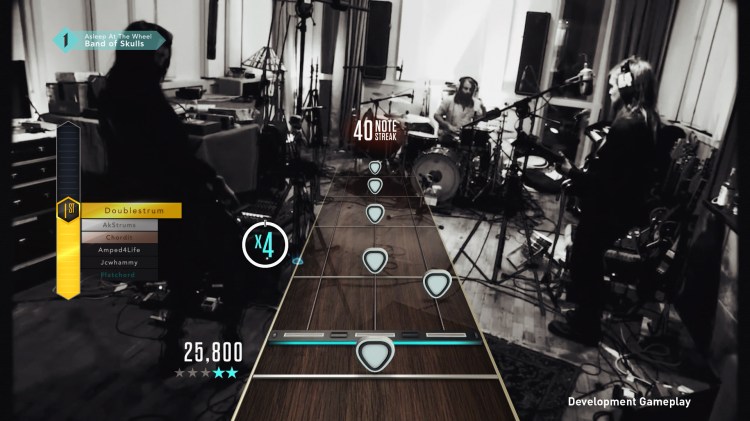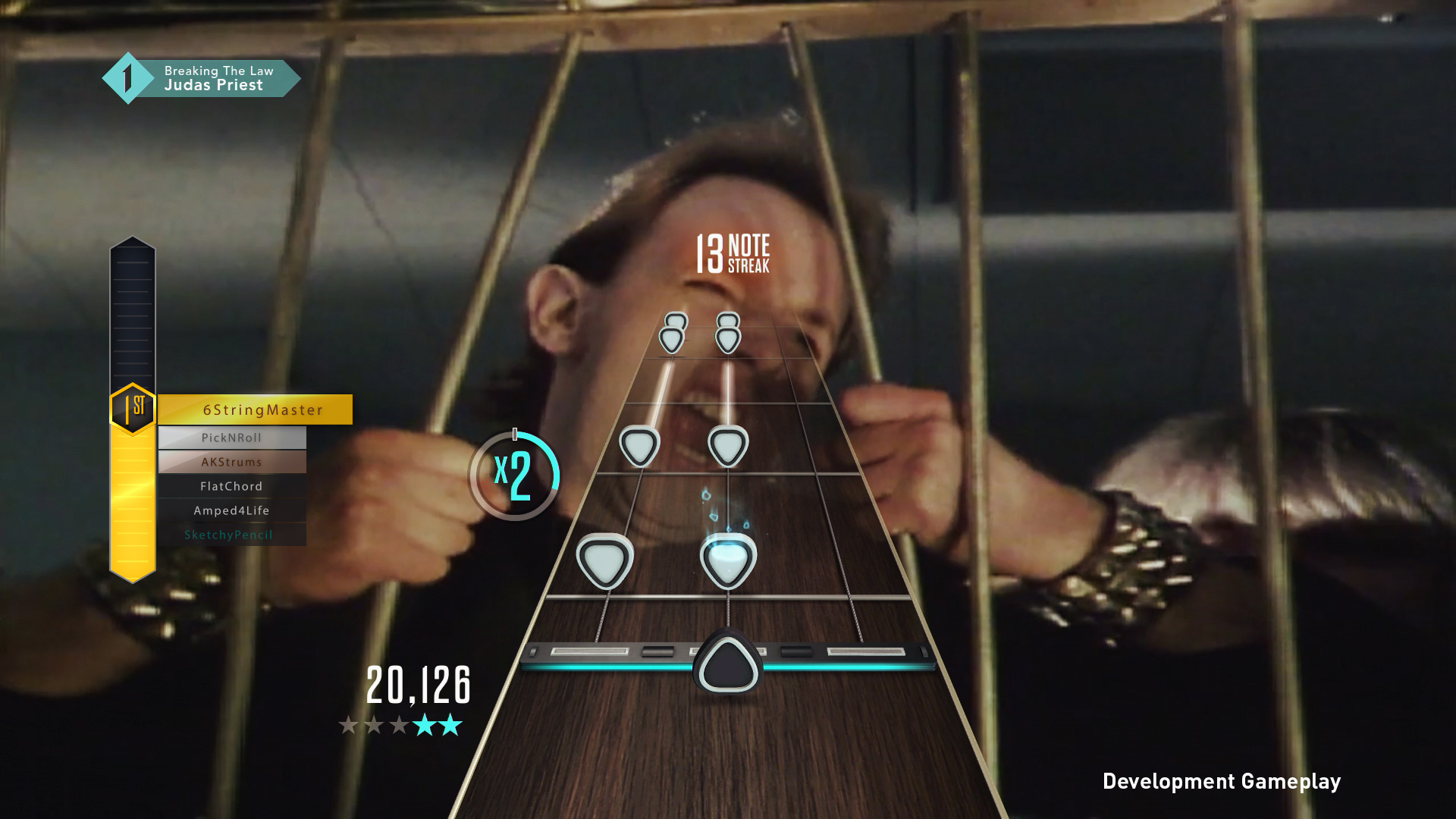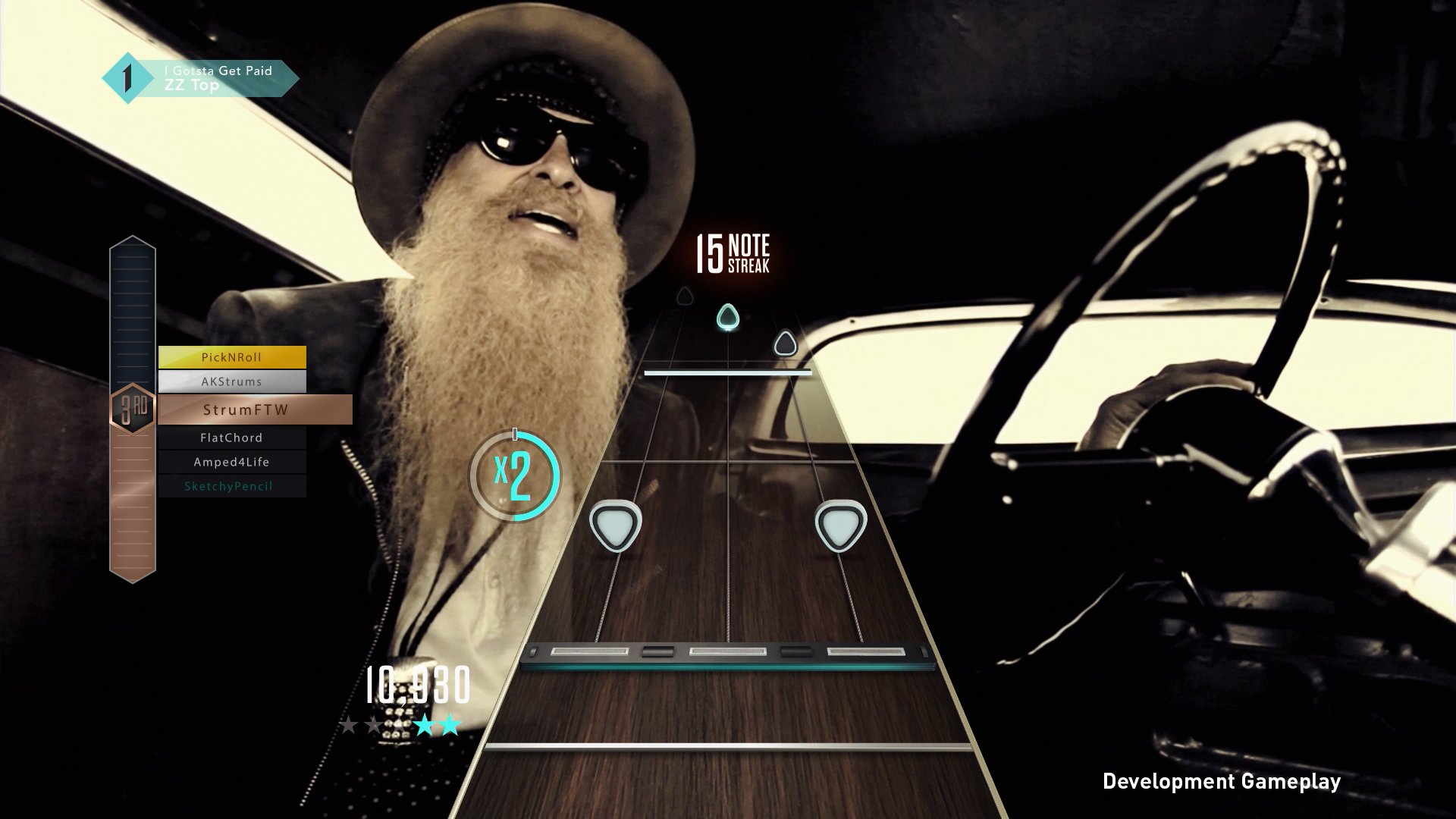Guitar Hero Live is a concert that wants to go on forever.
A morphine shot to the heart of the once billion-dollar rhythm franchise from Activision, FreeStyle Games’ Live borrows heavily from mobile-game techniques and television to keep the party going in perpetuity. I recently sat down with some of the developers behind this revived rock tour in San Francisco to get an extensive look at how they plan to keep the volume at 11 at all times.
FreeStyle (the minds behind the sadly underplayed DJ Hero series) are crafting Guitar Hero TV, a multiplayer service completely separate from the live-action concerts that have dominated the game’s early press blitz. GHTV relies on live-streamed channels and curated content to keep new and veteran players glued to their frets. Take away the solos and the note streaks, however, and you’ll see a lot of well-run free-to-play strategies at work here.
Free-to-rock
While mobile games have gotten a reputation for some devious monetization tactics, access to GHTV isn’t always locked behind paywalls. The hundreds of songs that will be available at Guitar Hero Live’s launch will all be accessible straight away, and you can load up every tune that’s part of the main Live campaign in quick play, same as every other Guitar Hero or Rock Band release. In GHTV, players have a set number of Plays, units of in-game currency needed to boot up and jam to any song on this reportedly gigantic set list. Plays recharge after a set amount of time spent in-game, but FreeStyle didn’t confirm the exact amount of time during my preview.
Players gain coins progressively through GHTV, with everything done in the game earning players some amount of in-game currency. If I were to cancel out of a song in GHTV after only playing 30 notes, I still get whatever small amount of coins I earned in that time. I could then trade in said coins for unique note highways (ranging from simple background graphics to fully animated, themed runways), player cards that appear on leaderboards and after each completed song, and various upgrades to score multipliers. While players can purchase most content with real money as well as coins, multiplier upgrades are only available via coins earned while in play.
Of course, those would-be rockstars with their eyes on a specific track can always buy it separately with real cash, same as it ever was.
This begins our broadcast day
The driving force of GHTV is its various methods of streaming content, live and at all hours. And while the much more hyped Live campaign uses filmed crowds as a background to your face-melting shreds, GHTV relies on a combination of music videos and live recordings of songs to fill in the visuals. Multiple channels — mostly broken down by genre or decade, if my demo is any indication — have a set schedule of content going on throughout the day and are eventually curated to the kinds of songs you have played most before. Players can view the ongoing schedule and opt into any broadcast, diving into the streamed song at whatever point the service is streaming it.
For example, a track in heavy rotation during my demo was The Red Hot Chili Peppers’ supremely excellent cover of Stevie Wonder’s “Higher Ground.” When the demo runner selected to join a rock broadcast already in progress, he dropped into the song at about the halfway point. Had he stayed after the song’s completion, he would have — reportedly — been seamlessly dropped into the next tune scheduled on the stream, still grooving on the Metal + Rock broadcast schedule until he opted back out or died of starvation. And anything played on these channels still contributes to leaderboard data, level progression, and earning Plays.
Special timed events are also available in GHTV, offering rewards and specific challenges (which frequently demand the player be at a certain level to participate). The example I checked out was a two-day song-completion challenge that gave its victors a unique note highway. But to get in to play the song, the player had to complete three other songs at a 3-star rating. Or, they could pay real money to head in immediately.
The rock ‘n’ roll TV show
Video was found guilty of murdering the radio star, but it may leave the multiplayer star alone.
Activision and FreeStyle Games may have found a way to make free-to-play tactics tolerable. The GHTV livestreams are a huge step toward bridging the gap between the microtransaction and expansion-pack reliant model of “games as a service” and the much less liked free-to-play pricing structure. FreeStyle doesn’t appear to have locked anything crucial to the rhythm experience away, and multiple methods exist to get access to most content, whether by paying for it or playing for it. And if none of this is to your taste, the tried-and-true split of main campaign songs on quickplay and individually bought DLC songs is still very much possible.
After all the years of pretending to be musicians, GHTV has taken the next step. Add in drugs and a depressing dependence on labels, and Guitar Hero Live is the most accurate Rockstar Simulator ever.
VentureBeat's mission is to be a digital town square for technical decision-makers to gain knowledge about transformative enterprise technology and transact. Learn More



